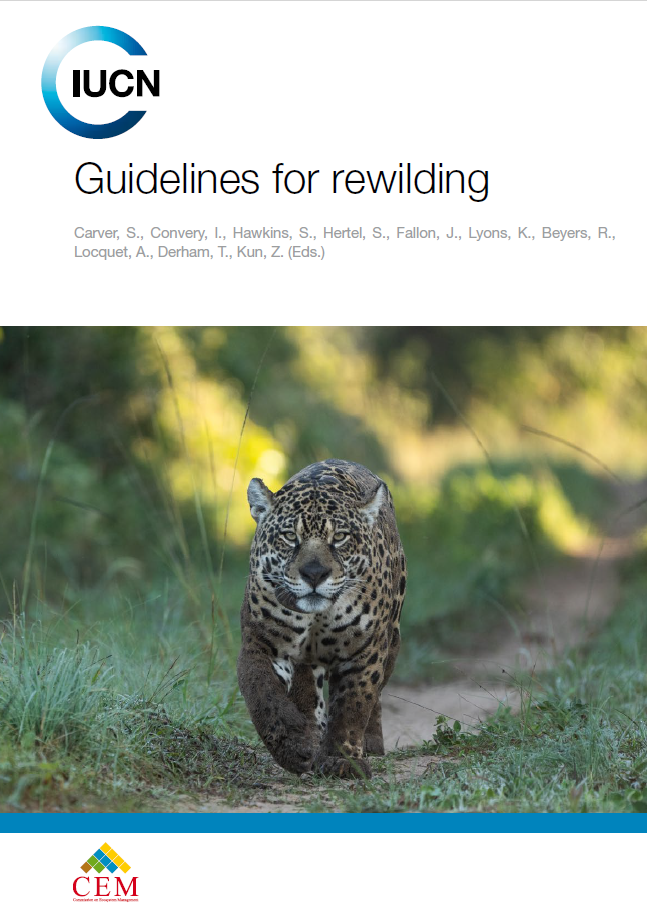New guidelines on rewilding practice have been launched at the IUCN World Conservation Congress 2025. Evolving over many years, the guidelines offer a clear, evidence-informed framework for rewilding initiatives around the world.
Developed by the Rewilding Thematic Group of the IUCN Commission on Ecosystem Management (CEM), the guidelines are a collaborative effort involving over 60 organisations. Aimed at practitioners, policymakers and communities, they include foundational principles for implementing rewilding projects and for integrating rewilding into broader conservation strategies.
Acknowledging the hard work of the many Commission experts and stakeholders involved, CEM Chair Angela Andrade emphasised that “this momentum towards a formal IUCN policy on rewilding will ensure that rewilding is firmly embedded in global conservation policy in a way that is inclusive, evidence-based, and forward-looking”.
Dr Steve Carver, Professor at the University of Leeds, co-chair of the CEM Rewilding Thematic Group and co-author of the guidelines, said: “These guidelines have been eight years in the making, involving input from hundreds of people including policymakers, practitioners, scientists and academics from across the conservation sector, representing the views and expert knowledge of rewilding organisations worldwide. They provide a definitive statement of the state of the art in this growing field”.
Rewilding aims to restore healthy ecosystems by reinstating natural communities and processes, while working alongside more traditional conservation and ecological restoration approaches. It contributes directly to meeting global objectives such as creating “ecological integrity”, a core principle of the 1992 Rio Earth Summit. It is also embedded in international agreements such as the Kunming-Montreal Global Biodiversity Framework and its targets to restore 30% of all degraded ecosystems and conserve 30% of land, waters and seas.
“Rewilding is both bold and pragmatic. These guidelines provide a shared framework that is rooted in science but also informed by the lived realities of communities around the world. At its heart, rewilding is about giving nature the space and time to recover, while recognising our responsibility to work alongside natural processes. By embedding rewilding into conservation practice and policy, we are not only restoring ecological integrity but also reimagining our relationship with the living world. This is a hopeful and necessary step towards thriving landscapes where people and nature flourish together”, said Dr Ian Convery, Professor at the University of Cumbria, co-chair of the CEM Rewilding Thematic Group and co-author of the guidelines.
As rewilding gains momentum in conservation policy, practice and public discourse, the CEM guidelines on rewilding recognise the diversity of rewilding approaches worldwide, while articulating a shared vision for rewilding. Grounded in ecological science and informed by social science insights, they provide a flexible framework that can be adapted to various environmental, cultural and governance contexts.
The guidelines will make a major contribution to meeting the mandate of the World Conservation Congress for IUCN to adopt a new policy on rewilding, while also helping practitioners apply principles and guidance in their day-to-day work.
Read the publication “Guidelines for rewilding” here.


